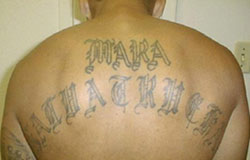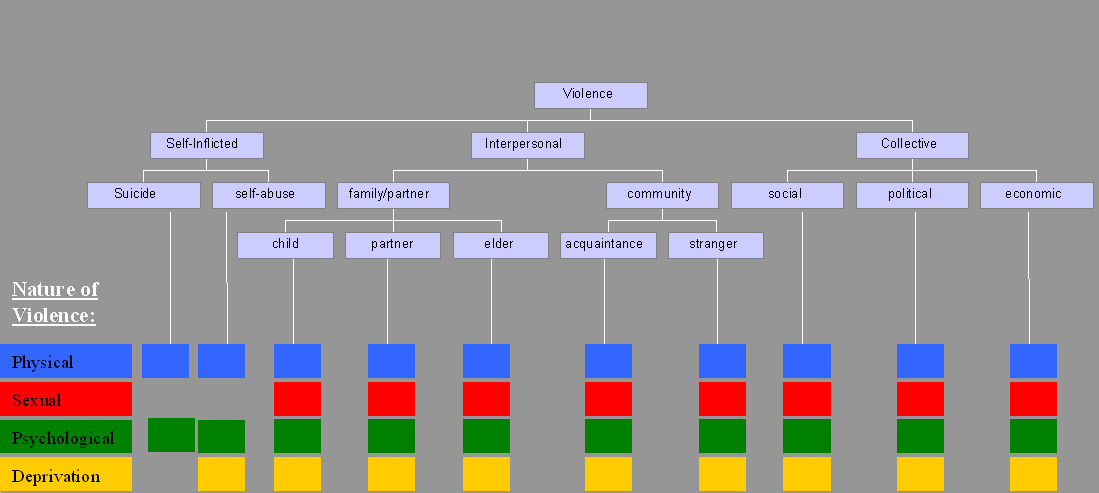|
Crime In El Salvador
Crime in El Salvador was historically high due to the presence of various gangs. In 2011, there were an estimated 25,000 gang members at large in El Salvador; with another 43,500 in prison.Guillermoprieto, Alma"In the New Gangland of El Salvador,"''The New York Review of Books'', 10 November 2011. The best-known gangs, called '' maras'' in colloquial Salvadoran Spanish, are Mara Salvatrucha (MS-13) and their rivals 18th Street; ''maras'' are hunted by death squads, including '' Sombra Negra''. Newer rivals include the rising ''mara'', The Rebels 13. El Salvador is one of the three countries of the Northern Triangle of Central America, along with neighboring Guatemala and Honduras, which are all afflicted with high levels of violence. The homicide rate in El Salvador has plummeted drastically since 2015. The Salvadoran gang crackdown has led El Salvador to have the highest incarceration rate in the world, at 1,086 people per 100,000 in 2023. In 2023, an estimated 1.6% of El S ... [...More Info...] [...Related Items...] OR: [Wikipedia] [Google] [Baidu] |
Sex Trafficking In El Salvador
Sex trafficking in El Salvador is human trafficking for the purpose of sexual exploitation and slavery that occurs in the Republic of El Salvador. It is a country of origin, transit, and destination for sexually trafficked persons. El Salvador citizens and foreigners, primarily women and girls, are sex trafficked to the different departments of El Salvador, as well as other countries, namely Mexico and the United States. The illegal transporting and sexual assault of migrants from Latin America to the United States is a problem. The majority of foreign victims of sex trafficking in El Salvador come from Honduras, Nicaragua, and Guatemala. Children, deported migrants, and people in poverty are especially vulnerable to sex trafficking. Incidents have involved child pornography and sex tourism. Sex trafficked victims are deceived or abducted and forced into prostitution and unfree labour. They are guarded or locked up in brothels, homes, and other locations. Some are forced int ... [...More Info...] [...Related Items...] OR: [Wikipedia] [Google] [Baidu] |
Structural Violence
Structural violence is a form of violence wherein some social structure or social institution may harm people by preventing them from meeting their basic needs or rights. The term was coined by Norwegian sociologist Johan Galtung, who introduced it in his 1969 article "Violence, Peace, and Peace Research". Some examples of structural violence as proposed by Galtung include institutionalized racism, sexism, and classism, among others. Structural violence and direct violence are said to be highly interdependent, including family violence, gender violence, hate crimes, racial violence, police violence, state violence, terrorism, and war. It is very closely linked to social injustice insofar as it affects people differently in various social structures. Definitions Galtung According to Johan Galtung, rather than conveying a physical image, ''structural violence'' is an "avoidable impairment of fundamental human needs." Galtung contrasts structural violence wit ... [...More Info...] [...Related Items...] OR: [Wikipedia] [Google] [Baidu] |
Violence
Violence is characterized as the use of physical force by humans to cause harm to other living beings, or property, such as pain, injury, disablement, death, damage and destruction. The World Health Organization (WHO) defines violence as "the intentional use of physical force or power, threatened or actual, against oneself, another person, or against a group or community, which either results in or has a high likelihood of resulting in injury, death, psychological harm, maldevelopment, or deprivation"; it recognizes the need to include violence not resulting in injury or death. Categories The World Health Organization (WHO) divides violence into three broad categories: self-directed, interpersonal, and collective. This categorization differentiates between violence inflicted to and by oneself, by another individual or a small group, and by larger groups such as states. Alternatively, violence can primarily be classified as either instrumental or hostile. Self-in ... [...More Info...] [...Related Items...] OR: [Wikipedia] [Google] [Baidu] |
Human Trafficking
Human trafficking is the act of recruiting, transporting, transferring, harboring, or receiving individuals through force, fraud, or coercion for the purpose of exploitation. This exploitation may include forced labor, sexual slavery, or other forms of commercial sexual exploitation. It is considered a serious violation of human rights and a form of modern slavery. Efforts to combat human trafficking involve international laws, national policies, and Non-governmental organization, non-governmental organizations. Human trafficking can occur both within a single country or across national borders. It is distinct from people smuggling, which involves the consent of the individual being smuggled and typically ends upon arrival at the destination. In contrast, human trafficking involves exploitation and a lack of consent, often through force, fraud, or coercion. Human trafficking is widely condemned as a violation of human rights by international agreements such as the United Nat ... [...More Info...] [...Related Items...] OR: [Wikipedia] [Google] [Baidu] |
Extortion
Extortion is the practice of obtaining benefit (e.g., money or goods) through coercion. In most jurisdictions it is likely to constitute a criminal offence. Robbery is the simplest and most common form of extortion, although making unfounded threats in order to obtain an unfair business advantage is also a form of extortion. Extortion is sometimes called the " protection racket" because the racketeers often phrase their demands as payment for "protection" from (real or hypothetical) threats from unspecified other parties; though often, and almost always, such "protection" is simply abstinence of harm from the same party, and such is implied in the "protection" offer. Extortion is commonly practiced by organized crime. In some jurisdictions, actually obtaining the benefit is not required to commit the offense, and making a threat of violence which refers to a requirement of a payment of money or property to halt future violence is sufficient to commit the offense. Exaction ... [...More Info...] [...Related Items...] OR: [Wikipedia] [Google] [Baidu] |
LAPD Rampart Division
The Rampart Division of the Los Angeles Police Department (LAPD) serves communities to the west of Downtown Los Angeles (DTLA) including Silver Lake, Echo Park, Pico-Union and Westlake, all together designated as the Rampart patrol area. Its name is derived from Rampart Boulevard, one of the principal thoroughfares in its patrol area. The original station opened in 1966, located at 2710 West Temple Street. In 2008, the staff moved southeast to a newer facility located at 1401 West 6th Street. With 164,961 residents occupying a area, Rampart is one of Los Angeles's most densely populated communities. History The Los Angeles Police Department's (LAPD) Rampart Division (#02) was created in October 1966. It was formed from portions of LAPD's Central, Wilshire, University (now Southwest), and Hollywood Areas. William H. Parker was the Chief of Police at the time, and he stated that the new Rampart Division was needed to decrease the span between the Metropolitan, Hollywood, and ... [...More Info...] [...Related Items...] OR: [Wikipedia] [Google] [Baidu] |
Salvadoran Gang Crackdown (2022–present)
A crackdown on gangs began in El Salvador on 27 March 2022 in response to a series of homicides committed by criminal gangs between 25 and 27 March 2022 which killed 87 people. After the killings, the Salvadoran government declared a state of emergency that suspended several constitutional rights and enabled the government to launch mass arrests of suspected gang members. The crackdown and state of emergency have since been extended 37 times . In El Salvador, the crackdown has been called the "State of Exception" () or the "War Against the Gangs" (). , over 85,000 people accused of having gang affiliations have been arrested, which has overcrowded El Salvador's prisons and has led the country to have the highest incarceration rate in the world by 2023. As of 16 May 2023, 5,000 people who were arrested have been released. In January 2023, Minister of Defense René Merino Monroy announced that the government registered 496 homicides in 2022, a 56.8% decrease from 1,147 homicide ... [...More Info...] [...Related Items...] OR: [Wikipedia] [Google] [Baidu] |
2012–2014 Salvadoran Gang Truce
From March 2012 to May 2014, the Government of El Salvador, Salvadoran government, the Catholic Church in El Salvador, Catholic Church, and the country's two largest criminal gangs — MS-13, Mara Salvatrucha (MS-13) and the 18th Street gang (Barrio 18) — came to a Ceasefire, truce, known in El Salvador simply as the Gang Truce (), to lower the List of countries by intentional homicide rate, country's rate of homicides and extortions in exchange for improved prison conditions and certain visitation privileges. The truce's principal negotiators were Minister of Public Security David Munguía Payés, former deputy , and Bishop Fabio Reynaldo Colindres Abarca, and the negotiations were overseen by President Mauricio Funes. The existence of the truce was alleged by the online newspaper ''El Faro (digital newspaper), El Faro'' in early March 2012, after 30 gang leaders were transferred from a maximum-security prison to a lower-security prison, and confirmed after representatives fr ... [...More Info...] [...Related Items...] OR: [Wikipedia] [Google] [Baidu] |





